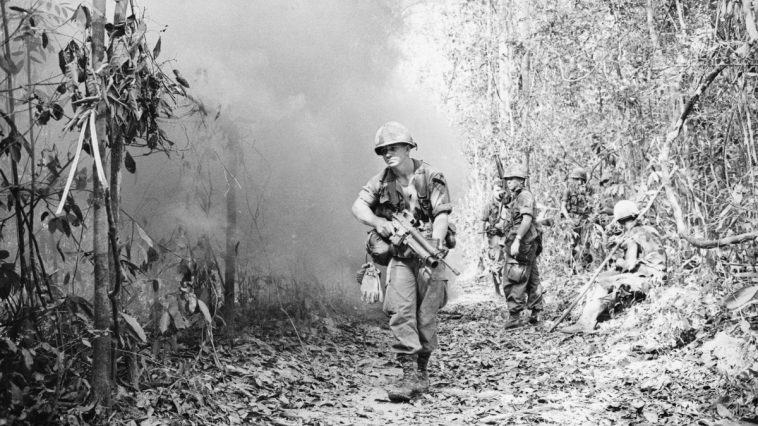Who were the Khmer Bleu? As you’re on this site I’ll assume that you know who the Khmer Rouge were, but perhaps you do not know why they got that name.
The Khmer are the majority ethnic of Cambodia, so Khmer means Cambodian. Rouge is red in French. Sihanouk whilst leading the country through the one party Sangkum era coined the phrase “Khmer Rouge” to mean leftist Cambodians. Initially it was not meant to denote the clandestine.
Latterly Khmer Rouge specifically referred to the regime of Pol Pot and his subsequent rebellion. Ironically at a time when Cambodian had an actual communist government. Regardless the moniker stuck and whether the Khmer Rouge were communist, or not is a whole other question.
Who were the Khmer Bleu?
Essentially the Khmer Bleu, meaning Blue Cambodians were the exact opposite of the Khmer Rouge. The Khmer Bleu, or to give them their correct title The Khmer Serei (Khmer: ខ្មែរសេរី “free Khmer were another armed anti-government insurgency.
Who were the Khmer Serei?
The Khmer Serei ironically come from the same family that spaawned the Khmer Rouge, namely the. The Khmer Issarak were informal groups fighting against French colonial rule. Initially many were extremely anti-communist, but as Vietnamese influence increased, so did the leftist nature of the movement.
It was founded by Khmer nationalist. In 1959 he published ‘The Manifesto of the Khmer Serei’. In it he proclaimed that Sihanouk was slowly turning Cambodia communistic. Sihanouk’s ruling party whilst having some socialist elements, referred to as “Buddhist Socialism, but it was not.
From here he formed his own militia that was both anti-communist and anti-royalist, ironically funded and supported by Thailand, a Kingdom.
Why were the Khmer Bleu so anti-Sihanouk?
As stated the previously the leadership of the movement felt that Sihanouk was too leftist, although again this should be seen in the context of the time. Sihanouk had though made friends with major communist leaders, as well as allowing the Vietnamese to use the country as part of the Ho Chi-Minh.
And it would appear that the hatred indeed went both ways. In many respects Sihanouk saw the Khmer Bleu as bigger traitors than the Khmer Rouge, and took the movement as a personal insult. There are many claims of massacres carried out by the Royalist government against the Khmer Bleu and those suspected of supporting it.
How strong where the Khmer Serai?
In reality not very strong at all, particularly when compared to the. Sihanouk still saw them as not only traitors, but a threat to his regime. Thousands of supporters, or members were killed during the Sangkum era.
The end of the Khmer Bleu
The effective end of the Khmer Blue/Khmer Serai occurred with the mass defections of 1969. In early 1969, five hundred Khmer Serei soldiers defected from South Vietnam to Cambodia. There are two theories about why this happened. One is that Son Ngoc Thanh sent them to infiltrate the military of Sihanouk. The second and probably more probable is that they were sent by the CIA. It would only be one year later that Lon Nol would lead a successful right-wing coup against Sihanouk.
Following the coup Thanh dissolved the Khmer Serai and pledged his support for the government of Lon Nol. His soldiers though were to continue fighting the communists in both Vietnam and Cambodia.
The Khmer Bleu and Democratic Kampuchea
Ironically it was the Khmer Serai dissolving and supporting Lon Nol that led to Sihanouk and the Khmer Rouge forging their unholy alliance. In that respect despite being “anti-communist”, they directly helped the Khmer Rouge gain power.
Thanh was arrested after the fall of Saigon and would later die in prison. As for the rest of the Khmer Bleu, very few of those who could not flee would survive the Killing Fields.
